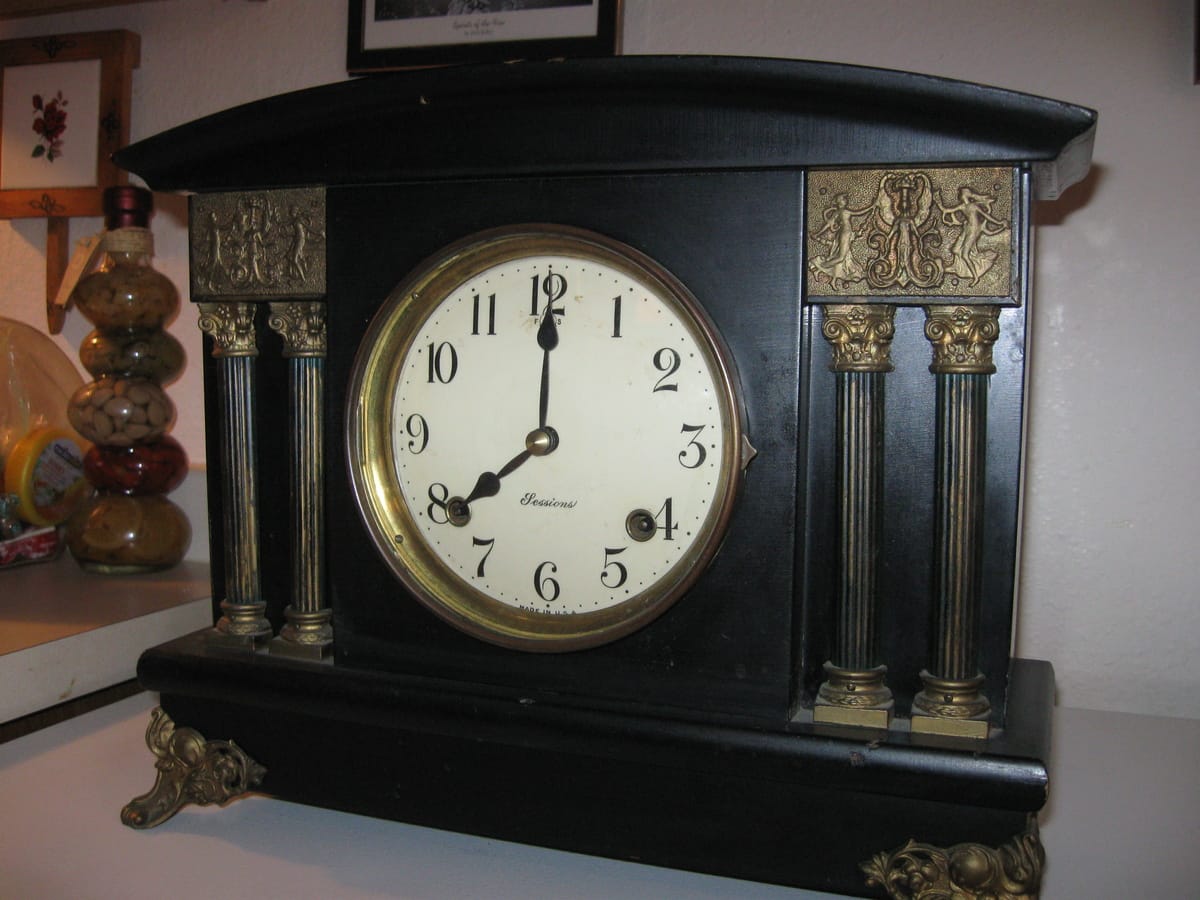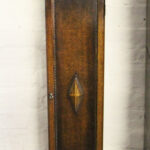Imagine a treasure from a bygone era, a silent witness to history gracing your mantelpiece. Old mantelpiece clocks, with their intricate designs and ticking mechanisms, speak of time and craftsmanship. This guide delves into the fascinating world of these antique timekeepers, helping you appreciate their beauty, recognize their value, and bring their timeless charm into your home.
A History of Mantel Clocks
Mantel clocks are more than mere timekeepers; they’re whispers of the past, tangible pieces of history. These antique timepieces blend artistry and functionality, transforming a mantelpiece into a focal point brimming with character. Let’s journey back in time to explore their evolution, from humble beginnings to ornate status symbols. We’ll uncover stories from grand Victorian parlors to cozy Art Deco living rooms, appreciating the craftsmanship and cultural context that shaped these timeless treasures.
Victorian Era (Pre-1900)
The Victorian era saw mantel clocks become symbols of prosperity and status. Often crafted from rich woods like walnut and mahogany, these clocks frequently featured ornate carvings, gilt accents, and elaborate details. Seven-day movements and later, converted quartz battery movements were common.
Art Deco
The Art Deco period of the early 20th century brought a dramatic shift in style. Geometric shapes, stylized designs, and sleek lines characterized these clocks, often incorporating materials like wood (ebony and walnut), chrome, glass, and Bakelite.
Other Notable Styles
The Edwardian era offered a refined elegance, less ornate than the Victorian period but still rich in detail. Mahogany and oak were popular, often with inlaid materials and silver plating. Georgian mantel clocks emphasized simple elegance, symmetrical designs, and high-quality materials such as mahogany, walnut, brass, and enamel.
A Collector’s Guide
Ready to start your own collection? Excellent! This practical guide offers a starting point for navigating the world of antique mantel clocks.
Understanding Clock Movements
First, consider the clock’s movement. Is it a traditional mechanical movement—powered by intricate gears and springs—or a newer quartz movement? This distinction significantly influences maintenance and how often you need to wind it. Mechanical movements are the hallmark of older clocks, while quartz movements are more modern. Learn about Sonoma County’s famous Thornton Winery California and its legendary Pinot Noir.
Examining the Case
Next, examine the case. Is it crafted from wood, marble, or another material? Each material possesses unique characteristics and potential for wear and tear. Wood cases may exhibit signs of age, such as cracking or discoloration, while marble can chip or stain. Even the presence of Bakelite suggests a clock from the 1930s or 40s. Observe the case’s construction, noting features like curved brass walls or a box shape, which can offer hints about its age.
Assessing Condition
Inspect the clock’s overall condition. Are there signs of damage or previous repairs? While some wear is expected, excessive rust or damage can impact value and functionality.
Caring for Your Antique Mantel Clock
Owning an antique mantel clock is like owning a piece of history. Proper care is essential for preserving its beauty and functionality for generations to come.
Cleaning and Maintenance
Regular cleaning, using gentle methods appropriate for the materials, will maintain its appearance. For wood, a soft, dry cloth is usually sufficient. Marble can be cleaned with a damp cloth and mild soap, but avoid harsh chemicals. For mechanical movements, regular oiling by a qualified clockmaker is essential.
Professional Restoration
For repairs, consult a professional clockmaker. Their expertise ensures your clock receives the specialized attention it deserves, especially for intricate mechanical movements.
Sourcing Replacement Parts
Finding replacement parts for older clocks can be challenging but rewarding. Specialized dealers and online forums can be invaluable resources.
Identifying an Old Mantel Clock
Identifying an old mantel clock is like detective work, uncovering the secrets of its past.
Examining the Case
The case offers valuable clues. The material – dark, heavy wood, lighter ornate wood, brass, marble, Bakelite – hints at its age. The style – grand Victorian, sleek Art Deco, simple Georgian – helps narrow down the timeframe.
Inspecting the Movement
The movement is the clock’s heart. A mechanical movement with intricate gears suggests an older clock, while a quartz movement indicates a more recent origin. The movement’s condition – rusty or worn gears – provides further information.
Maker’s Marks and Other Clues
Maker’s marks on the dial, mechanism, or backplate identify the maker and sometimes the date. Hidden trademarks or inscriptions may reveal its origins. Numbers like DRGM on German clocks pinpoint the production year. The “Anniversary” trademark indicates post-1901 production. Electroplating suggests post-1836, and plywood cases likely date after 1905.
Research and Expert Consultation
Online databases, antique clock books, and expert consultations can provide valuable insights.
Authenticity Checks
Be mindful of reproductions. Examine the patina – the unique surface appearance developed over time – which is difficult to replicate. Compare your clock to similar models and be wary of unusually low prices.
Determining the Value of Old Clocks
Old clocks can be quite valuable, but determining their worth involves several factors.
Factors Influencing Value
- Age and Rarity: Older clocks, especially 18th- and 19th-century pieces, are often more valuable due to their scarcity. Unusual designs or clocks from obscure makers are highly sought after.
- Maker and Provenance: Clocks by renowned makers, like Wm Widdop, command higher prices. A documented history, such as ownership by a historical figure, adds to its value.
- Condition: Pristine condition with original parts significantly increases value.
- Functionality: A working clock, even one requiring minor repairs, is generally more desirable. Complex movements, such as those with chimes or astronomical tracking, are often more valuable.
- Materials and Design: Clocks made from exotic woods with intricate carvings or embellishments like porcelain or enamel are typically worth more. Popular styles like Art Deco and Victorian influence value.
Resources for Appraisal
Online resources, auction house records, and consultations with reputable antique dealers or appraisers provide insights into market value.
What is a Mantelpiece Clock Called?
The most common name is “mantel clock,” reflecting its typical placement on a mantelpiece. “Shelf clock” is another common term, acknowledging that a mantel is technically a shelf. “Mantelpiece clock” is a more formal variation. “Table clock” sometimes applies to smaller mantel clocks suitable for table display. “Chimney clock,” while occasionally used, is a misnomer, as these clocks aren’t built into the chimney. These names aren’t strictly defined; the key is that they refer to decorative, compact clocks designed for display. These clocks, popular in the 18th and 19th centuries, served both practical and decorative purposes, adding elegance to a room. Whether called a mantel clock or a shelf clock, they offer a glimpse into the past and continue to be cherished for their beauty and craftsmanship. Further research may reveal regional variations in terminology and other fascinating details about these timeless pieces.
Where to Buy Old Mantelpiece Clocks
For those seeking to acquire an old mantelpiece clock, several avenues exist. Sellingantiques.co.uk offers a wide selection from reputable UK antique shops. eBay provides a diverse marketplace with various sellers and options. Etsy showcases unique and handcrafted items, including restored clocks. Wayfair, while primarily selling new items, offers some “rustic” and antique-styled options. Exploring online marketplaces, auction houses, and local antique shops can also yield fruitful discoveries. Remember to research thoroughly and consider factors like age, maker, condition, and authenticity before purchasing.
- Unveiling the Enigma: Mansoureh Khojasteh Bagherzadeh’s Public Appearances & Private Life in Iran - July 18, 2025
- Unveiling the Mystery: Mansoureh Khojasteh Bagherzadeh’s Husband: A Rare Glimpse into a Private Life - July 18, 2025
- Unveiling Masoud Khamenei’s Mother: Power, Influence, and Iran’s Future - July 18, 2025
















